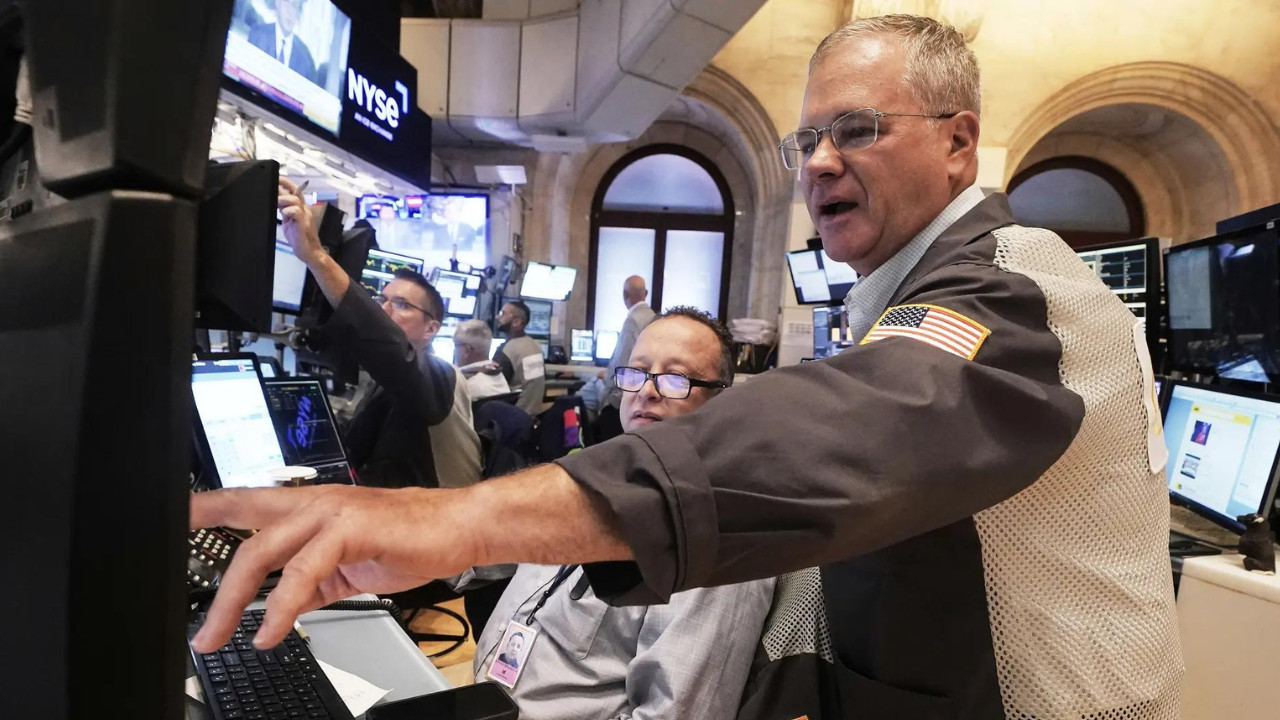Wall Street experienced a slight rise, poised for its best week in five, fueled by anticipation of a Federal Reserve interest rate cut. Investor sentiment is optimistic, driven by hopes that the Fed will ease rates to support growth. Mixed global market performance and rising Treasury yields reflect investor considerations of upcoming Fed actions.
Wall Street’s Mood Swing: Riding the Waves of Rate Cut Expectations
The stock market, that ever-churning sea of fortunes, has been anything but calm lately. We’ve witnessed a rollercoaster of emotions on Wall Street, driven primarily by the whisperings – and sometimes, the shouts – surrounding potential Federal Reserve interest rate cuts. It’s a complex dance, this push and pull between economic data, inflation anxieties, and investor optimism. Just when you think you’ve got a handle on things, the market throws you a curveball.
The latest movements paint a picture of cautious optimism tempered with a healthy dose of realism. The major indices – the Dow Jones, S&P 500, and Nasdaq – have all experienced fluctuations, reflecting the uncertainty gripping investors. One day, soaring hopes of imminent rate cuts send stocks surging. The next, a surprisingly robust economic report dampens those expectations, leading to a pullback.
But what’s fueling this obsession with interest rates? Simply put, lower interest rates are generally seen as a boon for the economy. They make borrowing cheaper, encouraging businesses to invest and consumers to spend. This, in turn, can boost corporate earnings and drive stock prices higher. The anticipation of this effect is a powerful force in the market. The inverse is true, as well: higher rates increase the cost of borrowing and can dampen economic activity.
Currently, the market is intensely scrutinizing every piece of economic data for clues about the Fed’s next move. Inflation figures are particularly important. If inflation shows signs of cooling down, it strengthens the case for rate cuts. Conversely, persistent or rising inflation could prompt the Fed to hold steady or even raise rates further, potentially triggering market jitters. It’s a high-stakes game of economic forecasting, and the market is hanging on every word from Fed officials.
Consider recent market performance. Optimism surrounding tech stocks has contributed significantly to the Nasdaq’s gains this year. Companies like Nvidia, riding high on the artificial intelligence wave, have experienced tremendous growth. Their performance has ripple effects across the entire index. However, even these giants aren’t immune to the broader market sentiment.

But it’s not just about the big names. Smaller companies and specific sectors, such as real estate, are particularly sensitive to interest rate changes. Higher rates can make it more difficult for these companies to refinance debt or fund new projects, impacting their profitability.
One thing’s clear: the future direction of the stock market hinges heavily on the Federal Reserve’s actions. Investors are carefully weighing the potential benefits of lower rates against the risk of persistent inflation. This creates a situation where even seemingly minor economic reports can trigger significant market swings. The resulting volatility can be unnerving, but it also presents opportunities for those who are prepared to navigate the uncertainty.
The impact of interest rates on the stock market is undeniable. We’re seeing a reaction to every hint about the future trajectory of these rates, a phenomenon that underscores the deep connection between monetary policy and market performance. Investors should consider diversifying portfolios, thinking long-term, and consulting a financial advisor to navigate this period of uncertainty. Learn more about strategies for [long-term investing](internal-link-to-investment-strategies-article).
Ultimately, the stock market’s journey is rarely a straight line. It’s a complex dance influenced by a multitude of factors, with interest rate expectations currently playing a starring role. Understanding this dynamic is crucial for anyone looking to navigate the ever-changing landscape of Wall Street. The key is to stay informed, remain adaptable, and avoid getting swept up in the waves of short-term market sentiment.







